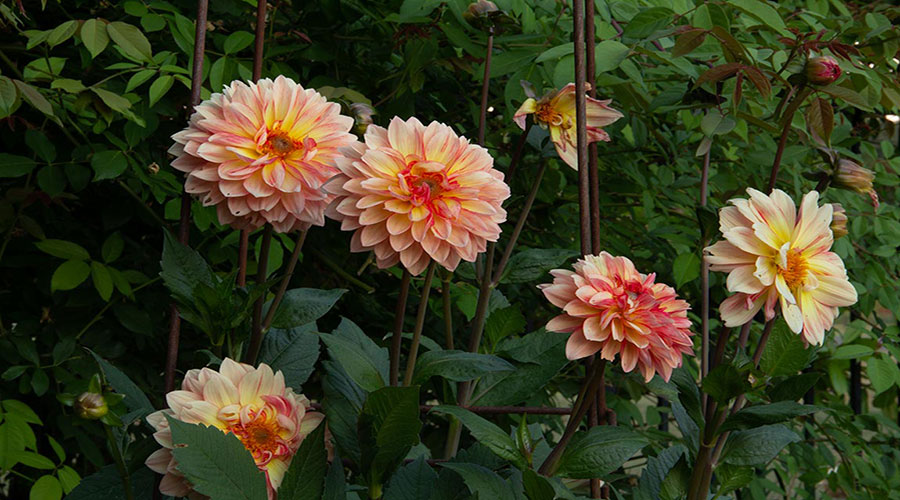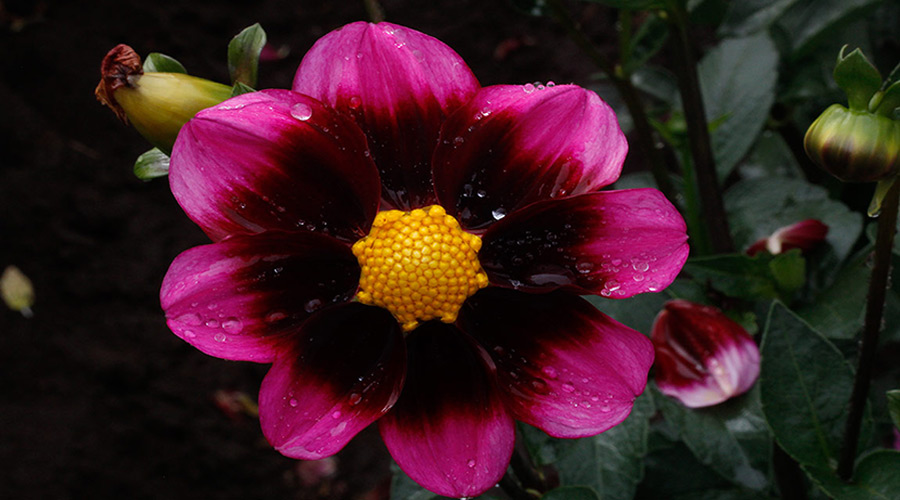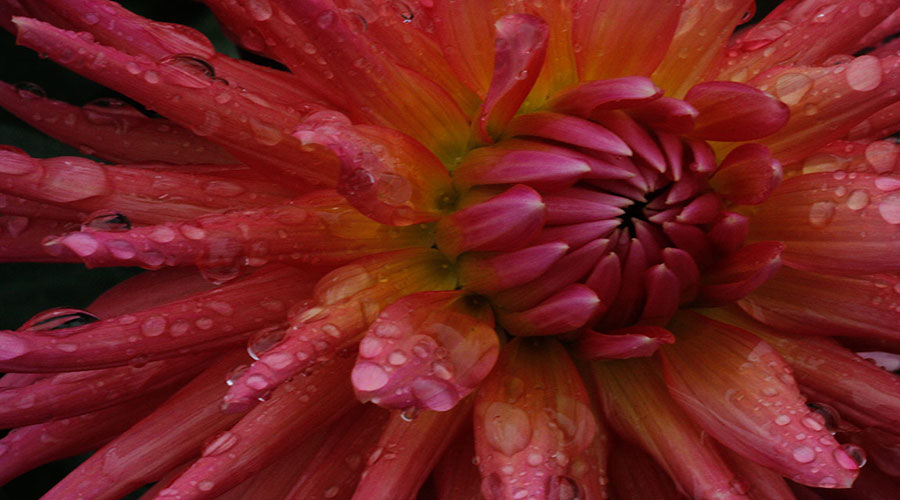Dahlias photographed by my husband Don welcome you right away on the home page. I believe you can assume how much I love these flowers! In this article, I want to introduce some basics of growing dahlias. A future article will cover the biggest dahlia pest for me, mites. I hate mites. My cousin in Portland Oregon doesn’t get mites on her dahlias, probably because temperatures are cooler there.
My favorite place to buy dahlias

Dahlias are my favorite, in the garden, and as a cut flower. So I must also mention my favorite place to see and buy dahlias, the Swan Island Dahlia farm in Canby Oregon. Their dahlia festival in late August around Labor Day weekend every year is worth a trip. I’ve even driven 500 miles from California to visit there. During the festival covering two weekends, they have demonstrations, cut flowers to buy, floral design classes, and best of all, a chance to see all those varieties growing prolifically across 50 acres.
How to grow dahlias?

So let’s talk about how to grow and care for dahlias. Swan Island’s website is an excellent resource to learn all about growing and caring for dahlias but here is my simplified approach:
- Amend the planting areas with organic compost.
- Plant tuber with “eye” or sprout of tuber face up.
- Cover with about 3” of amended soil.
- If you expect spring rains you don’t need to water planted dahlia tubers until new plant growth shows. (My mom always watered her newly planted tubers with a dilute solution of fish emulsion even though in western Oregon she always had spring rains. And her dahlias did very well!)
- In my hot, dry Mediterranean climate here in the Sierra foothills of Northern California, mites become a problem when it gets hot in the summer, usually starting in July. I will have a blog dedicated to mites in the near future. But note that mite control is one area where I disagree with Swan Island Dahlias. They will recommend pesticides which are easy and effective. I do not use pesticides in my garden.
- To continue the bloom period, I keep my dahlias deadheaded as soon as the blooms are spent.
Winter care

Winter care for dahlias and spring-time dividing of the tubers can become quite elaborate. The recommendation is to dig up the tubers the earlier of 2 weeks after the first killing frost or November 15. They then need further preparation for winter storage at 40-50 degrees in sawdust or shavings in a cool, dry area. In the spring, the tubers can be divided before planting. Dahlia tubers can be divided in a couple ways. New growth on the dahlia will occur at the base between the stem and tuber. This new growth may show up early as an “eye”. You can divide the tuber such that each piece has an eye on it. A piece of tuber with the new growth eye should be planted where it will receive plenty of sunshine, which will turn it into a beautiful dahlia in the summer.
Another way to divide the tubers is merely to cut the clumps of tubers in fourths with a knife or your shovel. Not as scientific, but it has been successful for me. And I don’t practice all the wintering recommendations either. I often leave the dahlia tubers in the ground for up to two years before I dig up the tubers in early Spring so that I can then immediately replant them. This is possible for me because we have mild winters that are not cold enough to freeze the ground.
Dividing the tubers every year can let you turn one plant into many, and sharing tubers with your gardening friends will make you very popular!
In addition to their spectacular showing in your garden, dahlias are great cut flowers. To prolong vase life give stems the “hot water” treatment. Just immerse the cut end of the stem in hot but not boiling water. I use my hot water dispenser at the sink for this. Leave them in the water until it cools. The portion of the stem that was in the hot water will be a light brown color. You can now cut the stem to any length, even into the area not immersed in hot water, and the bloom will be set. They will last 4-6 days in the vase.
So I hope you will add some dahlias to your garden. And stay tuned for another blog on mites and mite control during August.


